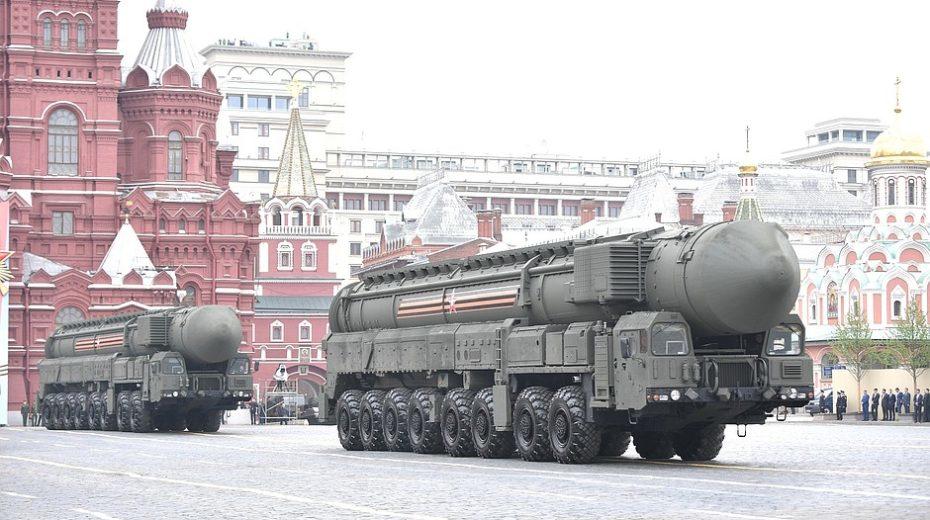Why the S-400 Is a More Formidable Threat to US Arms Industry Than You Think
by Federico Pieraccini, Strategic Culture:

Generally, when discussing air-defense systems here, we are referring to Russian devices that have become famous in recent years, in particular the S-300 (and its variants) and the S-400. Their deployment in Syria has slowed down the ability of such advanced air forces as those of the United States and Israel to target the country, increasing as it does the embarrassing possibility of having their fourth- or fifth-generation fighters shot down.
Air-defense systems capable of bringing down fifth-generation aircraft would have a devastating effect on the marketability and sales of US military hardware, while simultaneously boosting the desirability and sales of Russian military hardware. As I have often pointed out in other analyses, Hollywood’s role in marketing to enemies and allies alike the belief that US military hardware is unbeatable (with allies being obliged to buy said hardware) is central to Washington’s strategies for war and power projection.
As clashes between countries in such global hot spots as the Middle East increase and intensify, Hollywood’s propaganda will increasingly struggle to convince the rest of the world of the continued efficacy and superiority of US weapons systems in the face of their unfolding shortcomings.
The US finds itself faced with a situation it has not found itself in over the last 50 years, namely, an environment where it does not expect to automatically enjoy air superiority. Whatever semblance of an air defense that may have hitherto been able to pose any conceivable threat to Uncle Sam’s war machine was rudely dismissed by a wave of cruise missiles. To give two prime examples that occurred in Syria in 2018, latest-generation missiles were intercepted and shot down by decades-old Russian and Syrian systems. While the S-400 system has never been employed in Syria, it is noteworthy that the Serbian S-125 systems succeeded in identifying and shooting down an American F-117 stealth aircraft during the war in the Balkans.
There is a more secret aspect of the S-400 that is little disclosed, either within Russia itself or without. It concerns the S-400’s ability to collect data through its radar systems. It is worth noting Department of Defense spokesman Eric Pahon’s alarm over Turkey’s planned purchase of the S-400:
“We have been clear that purchasing the S-400 would create an unacceptable risk because its radar system could provide the Russian military sensitive information on the F-35. Those concerns cannot be mitigated. The S-400 is a system built in Russia to try to shoot down aircraft like the F-35, and it is inconceivable to imagine.
Certainly, in the event of an armed conflict, the S-400’s ability to shoot down fifth-generation aircraft is a huge concern for the United States and her allies who have invested so heavily in such aircraft. Similarly, a NATO country preferring Russian to American systems is cause for alarm. This is leaving aside the fact that the S-400 is spreading around the world, from China to Belarus, with dozens of countries waiting in line for the ability to seal their skies from the benevolent bombs of freedom. It is an excellent stick with which to keep a prowling Washington at bay.
But these concerns are nothing when compared to the most serious threat that the S-400 poses to the US arms industry, namely, their ability to collect data on US stealth systems.
Theoretically, the last advantage that the US maintains over her opponents is in stealth technology. The effectiveness of stealth has been debated for a long time, given that their costs may actually outweigh their purported benefits. But, reading between the lines, what emerges from US concerns over the S-400 suggests that Moscow is already capable of detecting US stealth systems by combining the radars of the S-400 with those of air-based assets, as has been the case in Syria (despite Washington’s denials).
The ability of the S-400 to collect data on both the F-35 and F-22 – the crown jewels of the US military-industrial complex – is a cause for sleepless nights for US military planners. What in particular causes them nightmares is that, for the S-400 to function in Turkey, it will have to be integrated into Turkey’s current “identification friend or foe” (IFF) systems, which in turn are part of NATO’s military tactical data-link network, known as Link 16.
Read More @ Strategic-Culture.org
Loading...



